
or

As we neared the end of 2014, Lex Witness took a stock of what went on the covers of Lex Witness in 2014. A showcase of varieties of issues grappled with in a detailed snapshot. Read the eclectic spread of issues have been covered by the Lex Witness.
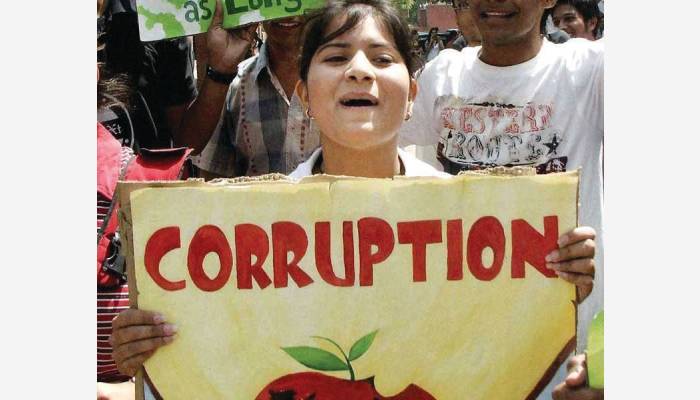
This story captured the significant developments from the field of legal and corporate affairs witnessed in the Year 2013. It highlighted the development that took place and the direction we were headed as far the policy initiatives and jurisprudence were concerned. The year saw Lalu Prasad Yadav losing his Parliamentary seat because of his conviction, FII crossing a record Rs 1 lakh crore, RBI data showing highest debt-to-reserve ratio in decade, telecom subscriber base reaching 90.3 crores by June, internet users hitting 74 million, etc.
As per the new norms, the companies would also have to provide the details of their promoters, directors and/or key management personnel who would be held responsible for ensuring compliance with the disclosure norms, while stock exchanges have been asked to publish these details on their websites in case of defaults. And SEBI has required the stock exchanges to put in place a stronger mechanism with additional manpower to monitor adequacy and accuracy of such disclosure.

The article deals with the Tax reforms that country badly needs and discusses the need for fiscal control. The story also discusses why it is important to do a comprehensive review of Direct Tax Code Bill 2010 and bring reforms in the Tax administration. The cover story also discusses the Kelkar Committee’s recommendations related to indirect and direct taxation.
Fiscal consolidation is very important because high fiscal deficits tend to heighten inflation, reduce room for monetary policy stimulus, increase the risk of external sector imbalances, dampen private investment, growth and employment.
The Kelkar Committee recommended a comprehensive review of the Direct Taxes Code Bill. It said that given the low tax- GDP ratio and the existing fiscal crisis, there was absolutely no fiscal space for such large revenue loss. Therefore, the Direct Taxes Code Bill, 2010 should be comprehensively reviewed. It recommended quoting PAN or the UID mandatory in all electronic transactions including bank accounts, fixed deposits with banks, salary payments and immovable property transactions, irrespective of the amount or level of transaction. Online verification of PAN could be made mandatory for high value transactions to reduce use of black money. It recommends issuingof pending refunds at the earliest which would improve liquidity of taxpayers and reduce their dependence on market borrowings at a relatively high interest rate.
It also recommended the Income Tax Department should create a national portal to enable taxpayers to file applications seeking rectifications and appeal effect. The Income Tax Department should establish a data-warehousing and data-mining infrastructure within the tax administration and build capacity for undertaking data mining and taxpayer profiling.
Amend the provisions of all tax laws to charge interest at rates which reflects the market rate of interest to the defaulters and a penalty for such default. The Income Tax Department should set-up a separate Directorate of Risk Management for designing a robust risk management system which will improve the efficiency of the tax administration and enhance transparency.
The panel recommends a 360 degree profile of all taxpaying individuals and institutions to help decrease tax evasion and tax fraud. This profile should also draw information from the AIR, TDS and other databases of the department.
On the indirect taxes, the committee recommended expediting implementation of the Goods and Services Tax (GST) regime. This will enhance output, exports and tax revenues.
The Union Excise Duties (UED) and Service Tax (ST) must be reformed so as to be in a state of preparedness for smooth integration of these levies into the GST. The standard rate of 12 per cent should be progressively reduced to align with the GST rate of 8 per cent proposed for the Central GST The committee suggested that the negative list of services should be reviewed for further pruning. There is no case for exempting non-profit organizations from the Service Tax levy.

This cover story captured the development of Diageo-USL deal. The deal – where Diageo chose to take substantial ownership and management rights in United Spirits Limited — was said to involve a 25% stake purchase for $870 million, or ` 5,236 crore. The idea behind the deal, as was declared by the parties to the transaction, was to synergise the mutual strengths of the Diageo and USL. i.e., Diageo’s strengths in marketing exceptional supply base.
The Competition Commission of India (CCI) concluded that: “In the present case, Diageo’s acquisition of USL may give a boost to the premiumisation strategy. Thus, new premium brands of the established brands (brand proliferation) and new premium brands (brand extension), are likely to be introduced in the market for spirits. The degree of product differentiation across price segments is likely to increase in the post combination scenario. The combination may increase and improve consumer choice and since the combining parties produce distant substitutes, the synergy of the firms will not detract competition.”
SEBI initially questioned the intention of the acquirer, but later cleared the open offer application on condition that such a sale can happen only after USL’s shareholders approve it subject to the approval of the shareholders.
As Mallya was expected to use part of the proceeds of the deal towards debt repayment and equity infusion in his ailing Kingfisher Airlines, the lenders to the airline, with whom the shares of USL were either pledged or mortgaged or hypothecated, were not happy with inter alia the valuation of the shares. And being unhappy the creditors to KFA took to court by filing winding-up petitions in the Karnataka High Court against United Breweries, had given corporate guarantees for the airline’s debt. The creditors were opposing the sale of the shares to Diageo and alleged that more than Rs 4,000 crore had disappeared from USL into a company incorporated in the British Virgin Island and hence needs to be enquired into.
The case moved to the Division Bench which held that such an allegations and when key parallel transactions were going on and company judge was also kept in the dark then such a transaction cannot be held to be a bona- fide transaction and hence liable to be set aside being void. The case finally reached the Sc which was to give its judgment in July that year.
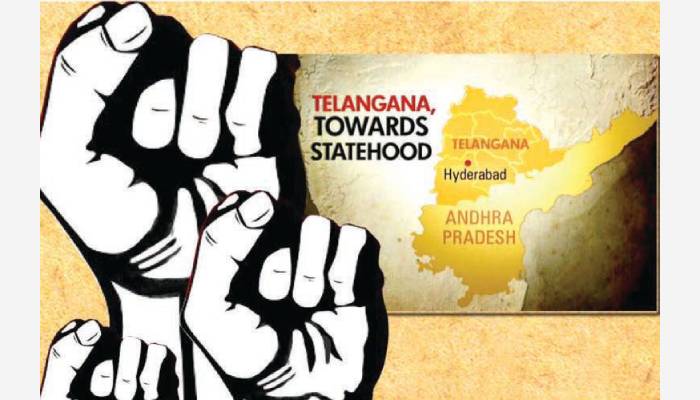
The article questioned the way Andhra Pradesh Reorganisation Bill 2014 was passed in the both houses of the Parliament. First, the Andhra Assembly chose to unanimously reject the Presidential Reference whereby the proposal for the division of the state was referred for the consideration of the state Assembly; then at the time of introduction of the Bill later on, Lok Sabha Speaker Meira Kumar had to suspend some 18 MPs from Andhra Pradesh for rest of the session after scenes were observed in Lok Sabha so much so that that even pepper spraying and fisticuffs were not spared by some of the “Hon’ble” Members of Parliament opposing and supporting Telangana.
Then the Lok Sabha passed the Bill by “illegally” blacking out the live broadcast and closing the doors in the absence of anybody in the visitors’ gallery or the press gallery. The Bill was rushed through both houses of Parliament without much debate and without carrying out the necessary constitutional amendments which were sine qua non for the passing of Bill. On the issue of pre requisite constitutional amendments under article 368 necessary before the creation of the State of Andhra Pradesh, then Law Minister, Kapil Sibal, opined that the next government after General Elections might look into it.
Then the Public Interest Litigation were filed before the Supreme Court of India by none other than the ‘last’ Chief Minister of United Andhra Pradesh, N. Kiran Kumar Reddy maintaining that act was “unconstitutional for being violative of the basic structure of the Constitution of India”.

The cover story tried to highlight the uncertainty surrounding the tax laws prevailing in those days. However, much has not changed since then apart from the introduction of Section 5(6) of the proposed DTC which specifically provides the imposition of capital gains tax on the overseas acquisition if the acquired company holds over 50 per cent assets in India.
In the Vodafone case, which was actually about avoidance of capital gain tax, the SC ruled that that the offshore transaction was a bona-fide “structured FDI investment into India which fell outside India’s territorial tax jurisdiction, hence not taxable.
While the Vodafone case was initiated in 2007, the apex court interpreted the provision of tax laws after a lapse of 5 years. This prompted the Indian government to amend the laws retrospectively which in turn again triggered a series of litigation between Vodafone and the IT department. Added to the retrospective taxation, the authorities bombarded the Vodafone with another issue of tax demand of around ` 37,000 crore on transfer pricing. The transfer pricing disputes and ambiguity of interpretation of double taxation treaties was certainly certainly going to put the country on the bottom of preference list of investors, the story argued.
The Summit of the G20 leaders mandated the world’s most influential tax-rules setting body, “Organisation for Economic Cooperation and Development (OECD)” to provide a roadmap to address these issues. OECD published 15-point action plan on “Addressing Base Erosion and Profit Shifting” (BEPS). BEPS mainly refers to the “tax planning strategies that exploit gaps and mismatches in tax rules to make profits ‘disappear’ for tax purposes or to shift profits to locations where there is little or no real activity but the taxes are low resulting in little or no overall corporate tax being paid.
While in the case of Nokia the story discussed that it was a royalty dispute. In fact, the setback in the Vodafone alerted revenue authorities to closely monitor the transaction of Nokia-Microsoft deal and put a stake in the big ticket worth of around Rs 6000 crore tax default. In the Nokia case, the Indian tax authority was not required to establish the local business connection in order to tax the foreign entity. Since no import of goods was involved, it was the import of mere technology. Hence, the royalty paid to import the technology, which in turn is being used to manufacture the marketable product, is taxable regardless of the residence or location of the company from where the technology is passed on to the Indian entity.
The present taxation is equipped suitably with the provision of Section 115A of the Income-tax Act, 1961. It stipulates that an Indian resident is required to deduct 10% tax from royalty payments to a foreign company. Based on this, India had liberalized the royalty paying rules in 2010. Since then royalty payments by Indian companies has been considerably increased The story also explored that the vagueness surrounding service tax as well. The Service Tax Voluntary Compliance Encouragement Scheme, 2013 (VCES 2013), as brought by the Finance Act, 2013, for instance, put numerous service industry workers wondering whether it was introduced for their benefit or as a punishment for voluntarily declaring their taxes.
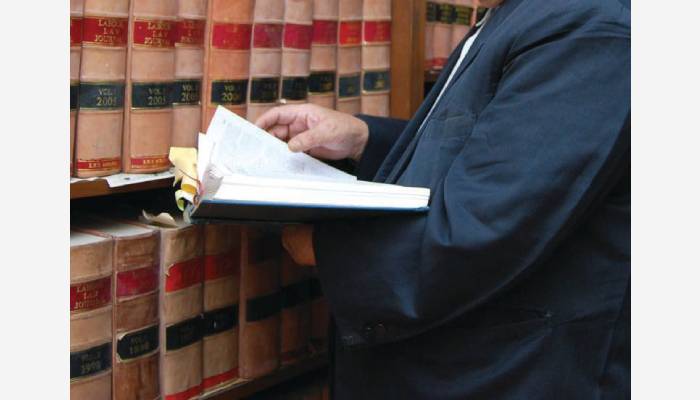
No one would deny that progress and change, or rather, drastic change, is what India is desperately in need. Law in any event, isn’t “carved in stone as much as it is written in water, flowing in and out with the tide”. Like a government, law needs to be stable, but it must never stand still.
It is ironic, nay, almost tragic, that after decades of discussion and a plethora of recommendations by various government committees and commissions including the National Police Commission, which produced numerous reports and also a Model Police Act, none of the governments implemented the recommendations; leading to two former Director Generals of police filing a Public Interest Litigation (PIL) in the Supreme Court in 1996! After a decade long battle, the Supreme Court finally, in 2006, ordered that reform must take place and directed states and union territories to comply with seven binding directives to kick start police reform.
In October 2012, a three-judge-bench of Supreme Court asked all state governments and Union Territories on compliance of its September 2006 judgment..
Leading economists as well as the legal and international community alike have repeatedly stressed the strong need for India to overhaul its archaic labour law regime, which is seen to hinder economic progress and consequently job creation.
Tax reform, they say, is about taking taxes off things that have been taxed in the past and putting taxes on things that haven’t been taxed before! As Grover Norquist, President of American for Tax Reforms rued humorously, “They tax when you earn a dollar, they tax you when you save it and they tax you when you invest it. If you earn a dividend, they tax it again, and if you’re stupid enough to die, they steal up to half!” The expectation is that the government will speed up implementation of the country’s ambitious direct and indirect tax law reforms (GST and the DTC), which have promised much needed simplicity and uniformity in the country’s tax regime.
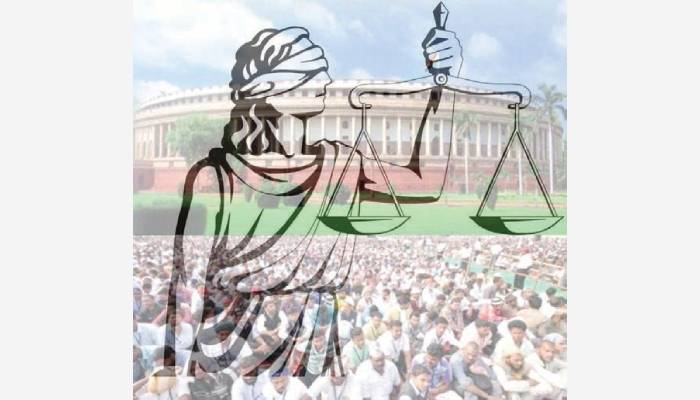
With the enactment of the Indian Independence Act, 1947, India became a dominion with a sovereign legislative power to affect or repeal all the existing laws including the Government of India Act 1935 and the British statutes which were thought to have been extended to India. As per Section 6 of the Act, supreme legislative power was conferred on the legislature, thereby no British statute was to extend to the independent India of its own force. So there are majority of statutes which have become altogether obsolete and inapplicable to India in the present day. Various Law commissions have recommended the repeal of certain old enactments which are useless at the present day, superseded by subsequent legislation, overtaken by the developments that have taken place since their passing or in obvious conflict with the constitution Law Commission in its 148th report recommended certain objective to be kept in mind for repeal or retention of the statutes, they are (a) keeping the statute book in repair (b) introduction of order symmetry in the statute book, (c) providing easy access to legislation and (d) maintaining or restoring harmony in the statute book.
The aim should be to deregulate legislations and compliance procedures. Over-regulation creates unnecessary red-tapism, paperwork, formalities and compliance procedures. Complying with them is burdensome as it costs businesses time and money. In turn it encourages corruption and hampers the overall growth and development of the Country. Courtesy India Code there is 2,500-3,000 Union statutes. The oldest are Bengal Districts Act and Bengal Indigo Contracts Act of 1836, and there are around 140 that go back to the 19th century and another 200 that predate Independence. To put its diktat in practice, the deregulation committee needs to look at international best practices being followed by other advanced legal systems. By adopting pertinent laws, it would be possible to reduce the dampening effect of the executive and cut through the redtapism. For example “The U.K.’s Better Regulation Executive” has mandated legislative reforms, to ensure that laws and regulations in the UK are fair and effective. The actions being taken are controlling the number of new regulations by operating a ‘one in, two out’ rule for business regulation, asessing the impact of each regulation, reviewing the effectiveness of the government regulations, reducing regulation for small businesses, and improving enforcement of government regulations and using alternatives to regulation
Prime Minister David Cameron announced that “this is the first government in modern history to reduce overall domestic regulation for business while in office. 800 regulations have already been abolished or simplified – with tens of thousands of pages of red tape still to face the chop.” Recently Canada announced its Economic Action Plan 2014 to reduce regulatory hurdles for businesses through the Red Tape Reduction Action Plan. This plan confirms the Government’s commitment to eliminate unnecessary red tape from Canada’s regulatory system, while maintaining high standards for safety and protection.
The 2012–2013 Scorecard Report: Implementing the Red Tape Reduction Action Plan confirms that the Canadian Government has made tangible progress through the following initiatives:
Drawing from the aforesaid best practices from UK & Canada, the government to bring about deregulation needs to establish a process at various levels of society. As recommended by various Law Commissions in their reports, the central acts which need to be repealed should be taken as prerogative over the state Acts because of the regulatory burden at the local level. The importance of the repeal or review needs to be recognized as statutorily at the central and state level. Systematic review clauses should be incorporated, so that after a particular time the automatic review will be necessitated.
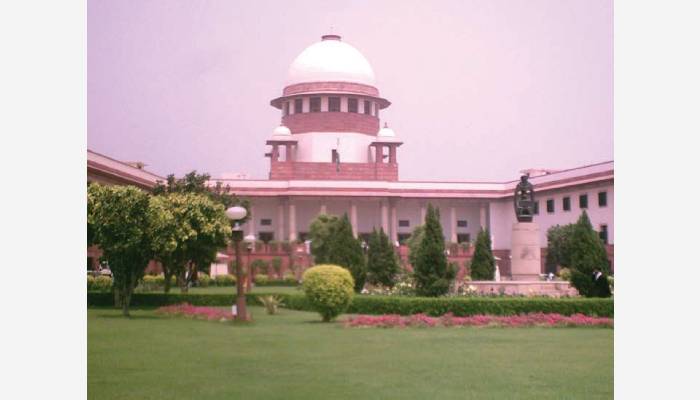
Finally, the curtain was drawn on the 20- year-old collegium system of appointing the High Court and Supreme Court judges after the Parliament cleared a Constitution Amendment Bill, 2014 that will facilitate setting up of a commission for appointing the judges. The new bill will now make way for the setting up of a National Judicial Appointments Commission (NJAC) to appoint and transfer judges.
It started with S.P. Gupta case in 1981 before the Supreme Court of India, where mainly the debate was on the word ‘consultation’ as enumerated in the Constitution of India with regard to the appointment of judges.
The relevant portion of the majority judgment delivered by Justice P.N. Bhagwati speaking for himself in regard to the expression ‘consultation’ occurring in Article 217 of the constitution is extracted here below: “Each of the three constitutional functionaries occupies a high constitutional office and Cl. (1) of Art. 217 provides that the appointment of a high court judge shall be made after ‘consultation’ with the functionaries without assigning superiority to the opinion of one over that of another…But it is only consultation and not concurrence of the Chief Justice of India that is provided in Cl.(1) of Art. 217. There must be a collegium to make recommendation to the President in regard to appointment of a Supreme Court or high court judge. The recommending authority should be in consultation with wider interests. If the collegium is composed of persons who are expected to have knowledge of the persons who may be fit for appointment on the Bench and of qualities required for appointment and this last requirement is absolutely essential – it would go a long way towards securing the right kind of judges, who would be truly independent and who would invest the judicial process with significance and meaning for the deprived and exploited sections of humanity.”
However, the scenario changed after the verdict of the Apex Court in Subhesh Sharma v. Union of India, AIR 1991 SC 631and the Supreme Court Advocates-on- Record Assn. v. Union of. India, (1993) 4 SCC 441. The collegium system was preferred and the reconsidered the issue of the primacy of the executive over the Chief Justice of India in appointing the judges to the high court and the Supreme Court. It talked much about the judicial independence.
In the Advocate on Record case, out of 9 judges, 7 judges consented for the CJI headed collegium system. Till today, the judges are being appointed as per the procedure laid down in that case. The executive was given an option of sending the name back for reconsideration, but CJI’s decision was considered as final.
The Lok Sabha passed the Constitution (99th Amendment) Bill 2014 paving the way to the National Judicial Appointment Commission (NJAC) Bill 2014, which proposes that the Chief Justice of India will head a six-member National Judicial Appointments Commission (NJAC), other members of which would be the law minister, two senior Supreme Court judges and two eminent people. A collegiums comprising of the prime minister, the chief justice of India and the leader of the single largest party in the Lok Sabha will select two eminent persons. One eminent person will be nominated from among the Scheduled Castes, Scheduled Tribes, OBCs, minorities or women. The bill also states that the commission will seek the views of the governor and chief minister of the state concerned in writing before appointing or transferring a judge of that high court.
Chief Justice of India R.M. Lodha had already defended the existing mechanism while lashing out at the “unfair” and “misleading campaign” to defame the judiciary and to tarnish its images. Desisting from outright rejection of the NJAC, Supreme Court Bar Association (SCBA) president P.H. Parekh felt there should have been wide ranging consultation and deliberations before the government moved to push out the collegium system.
Noted veteran lawyer Ram Jethmalani even condemned Law and Justice Minister Ravi Shankar Prasad being a member of the NJAC as he may have to practice sometime and hence the government should be represented by either the Prime Minister or the home minister. “Law minister is the most disqualified person to be the member of this commission. He cannot be trusted to have that kind of moral courage,” he told media persons. He also dismissed the government’s proposed commission and wanted that this body should have the power to dismiss judges and accuse the government of “betrayal” on this issue.
Noted lawyer KTS Tulsi said that it has taken 24 years to restore the balance and the issue should not degenerate into a turf war. The question is not who appoints, the matter is about transparency. According to him, “Ultimately, the power of appointment of judges must vest in the Parliament.”
The power of independence of judiciary was well established in the landmark judgment in Kesavananda Bharathi case, the Bill, even if it is passed in the parliament, once challenged before the Apex Court, it has to pass the SC test wherein the basic procedure for adopting the constitutional amendment within the basic structure of the doctrine for constitution, as laid down in the Kesvananda Bharathi case. As per the verdict in that case, the judicial scrutiny is the final for any amendment, if it violates the basic structure of the Constitution.
Need of the hour is that the new NJAC should bring the trust and transparency in the judicial system. The commission should be framed in such a way that both executive and judiciary are equally important.
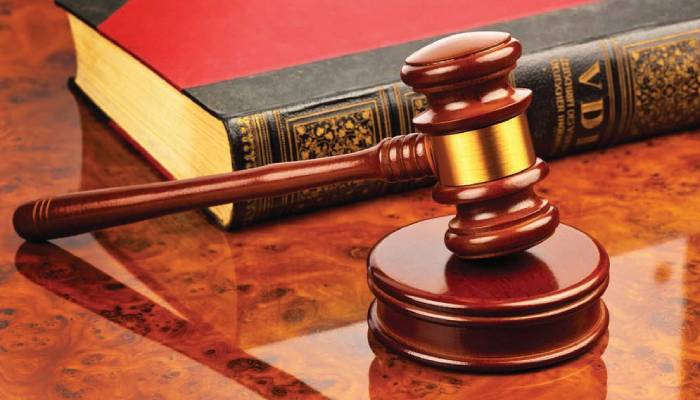
Bankruptcy is nothing but a market sanction. When a market fails to impose the change, the systematic market exit becomes necessary. A uniform bankruptcy law throughout the world is impossible. Also, all bankruptcy laws cannot be identical. A law, which performs reasonably well in one environment, cannot be expected to deliver the same performance elsewhere. The bankruptcy laws should be framed to address the core problems of the industry. Different institutional arrangements should emerge on the basis of the inter-creditor equity to well delineated economic problem of the company.
Today, the fundamental idea of the bankruptcy code in the US is to give the unfortunate debtor a fresh life and opportunity by relieving him from the personal liability and protect him from the creditors to jump on him suddenly. However, what about the laws in India?
Bankruptcy laws outside India focuses on reorganising the business with various mechanisms of restructuring, whereas the archaic laws of India provide various avenues to roll over the debts to keep the company in the suspended animation, like in the case of the Kingfisher Airlines.
Till now, there is only one legal frame work with two “formal” procedures:
Under the existing system, the Board for Industrial and Financial Reconstruction (BIFR), established under SICA, can only oversee rehabilitation of companies with licences to run factories. Those companies, which have operated for a minimum of five years and holding a factory licence, are eligible to approach the BIFR, if accumulated losses equal or exceed their net worth.
The Companies Act, 2013 gave life to the stagnated provisions for bankruptcy and insolvency under the old Act. Chapter XIX of the 2013 Act lays down the provisions for the revival and rehabilitation of sick companies. It has embedded the new bankruptcy code and integrated the provisions of SICA with the Companies Act. Unlike SICA, it is not restricted only to industries, but all the companies irrespective their sectors. Therefore, it has modernised the laws on bankruptcy, liquidation and the revival of sick units. The existing two procedure system, that is the revival of sick units by BIFR and their
liquidation by high courts, has been modified and brought the entire system based on the balance sheet threshold, before the National Company Law Tribunal(NCLT), which will consist of judicial and technical members and is vested with the both the existing dual procedure.
Witness hope this will simplify the legal formalities and will have in place time bound procedure to expedite the company liquidation and will show the way to a sick company as to how to use the existing resource for better use. While NCLT got legislative sanction in 2002, its setting up was delayed due to litigation. Given that asset values and their re-usage can faster change the ompanies Act 2013 proposes to sinking companies to come out of red within a specific time period.
The enactments, which are the relics from the colonial era Acts, should be stopped. Speedy and borrower friendly bankruptcy regime should be adopted and a settlement based bankruptcy regime should come into force. The philosophy behind bringing the new bankruptcy code to continuously rechannelise economic and human resources into more efficient use by restructuring viable businesses and helping to close unviable ones and start new ones should be strictly followed. Closure of any unit should always be the last option when so many stakeholders’ interests are at stake. Every sick company has made some initial investments in setting up basic infrastructure. Thus, it owns some assets and has employees working for it.

The Copyright Act is a composite structure of exclusive rights with certain exceptions and limitation. Unlike the other legal rights, Copyright is not an absolute right, but it is a right with exceptions and limitations, which differ from country to country. Fair dealing is a limitation and exception to the exclusive right granted by copyright law to the author of a creative work.
In the Indian perspective the Copyright as a right derives its basis from Article 19(1) (g) 5 and Article 300 A of the Constitution of India. So, any restrictions, limitations or exceptions to a person’s right to the enjoyment of copyright cannot be anything more than a reasonable restriction. Such restrictions manifests in the provisions relating to the Fair dealing/Fair use, which is an important concept in the Copyright Act
In India the doctrine of Fair Dealing is enshrined in the Section 52 of the Copyright Act, 1957. The fair dealing provisions under the Copyright Act, 1957 state that certain acts will not amount to an infringement of copyright. Under the Copyright Amendment Act, 1994, additional fair dealing provisions were introduced. Later various amendments to the Copyright Act had vast implications on the concept of the Fair Dealing.
The courts in India have on various occasions referred to the authority English case Hubbard v Vosper on the subject matter. In India Section 13 of the Copyright Act states about the originality. The Content of what is meant by the originality has undergone a paradigm shift from the days of “a sweat of the brow” as enunciated in the case of University of London Press vs University Tutorial press. While recognizing this shift and following the approach of the Canadian case law , the Supreme Court of India, in the case of Eastern Book Company vs DB Modak, noticed two positions in dealing with fair dealing, i.e.(1) the sweat of the brow and(2) a modicum of creativity. Thus, our judiciary too recognizes the Copyright is a statutory right and shifted from the natural rights theory attached to the Copyright. The honorable Supreme Court in the case of Entertainment Network (India) Ltd. v. Super Cassette Industries Ltd. held:
“…the owner of a copyright has full freedom to enjoy the fruits of his work by earning an agreed fee or royalty through the issue of licenses. But, this right…is not absolute. It is subject to right of others to obtain compulsory license as also the terms on which such license can be granted…in our constitutional scheme of statute, monopoly is not encouraged. Knowledge must be allowed to be disseminated. An artistic work if made public should be made available, subject of course to reasonable terms and grant of reasonable compensation to the public at large.”
The Indian and UK copyright laws regarding fair dealing are often characterized as very limited and restrictive as they work in accordance with an exhaustive list of actions which come under the scope of fair dealing. Under the US laws is very liberal. US law, in contrast to Indian law, does not specify acts which would be considered fairuse; rather it gives a four factor test that must be considered to assess whether an action of exploitation by the person falls within the ambit of fair use. The statutory language provides that:
“Notwithstanding the provisions of sections 106 and 106A, the fair use of a copyrighted work, including such use by reproduction in copies or phonorecords or by any other means specified by that section, for purposes such as criticism, comment, news reporting, teaching (including multiple copies for classroom use), scholarship, or research, is not an infringement of copyright. In determining whether the use made of a work in any particular case is a fair use the factors to be considered shall include:
The importance of the fair use still remains to be defined fully in the Indian Copyright regime. With the passage of time, India has been witnessing the major technological ameliorations, but still has a rigid approach in the law of fair dealing. Judicial activism is needed in this field to suit the atmosphere of advanced technology regime. Undoubtedly, doctrine of Fair dealing is important to strengthen the right of the citizen granted under Article 19 of the Indian Constitution. When the certainty in the other provisions are seen, the conservative approach reflects in the Section 52 of the Act can be liberalized.

Revealing the names of the overseas bank account holders will amount to the breach of the bilateral treaties India has executed by exercising its sovereign function, with regard to double taxation. This will have impact on the signing of Foreign Account Tax Compliance Act (FATCA) with US and ultimately will have catastrophic effect on the inflow of funds from US.
The Government finally gave a list of some 627 accounts, which is already there with Supreme Court mandated SIT. The point to be discussed here is the direction of SC will amount to encroach in the sovereign power of the state? The treaties are executed by the Government by exercising its sovereign power. The present directive of the Apex Court can be seen as manifestation of its earlier statement “Sky is our limit”. But the same Apex Court in 1969 in Maganbhai Ishwarbhai Patel vs UOI (1969 AIR 783) case held that “The question is one of authority. Who in the State can be said to possess plenum dominion depends upon the Constitution and the nature of the adjustment. As to the necessity of it, the Courts must assume it as a matter of law. It is scarcely to be thought that the validity of the action can ever depend upon the judgment of a court.”
Black Money issue is governed in India by money laundering regulations. The Financial Intelligence Unit (FIU) within the Ministry of Finance in India has been empowered under the money laundering regulations to investigate such matters. The responsibility of dealing with the challenge of unaccounted wealth and its consequences is jointly and collectively shared by a number of institutions belonging to the central and state governments. These include various tax departments which are assigned the task of enforcement of tax laws. Among them the important ones are the Central Board of Direct Taxes (CBDT) and the Central Board of Excise and Customs (CBEC). However, there are various other regulatory authorities undertaking supervision and policing. They include the
Enforcement Directorate (ED), Financial Intelligence Unit (FIU), Economic Offences Wing of the State Police, Central Bureau of Investigation (CBI), Serious Frauds Investigation Office (SFIO), and Narcotics Control Bureau (NCB). In addition, there are coordinating agencies such as the Central Economic Intelligence Bureau (CEIB), National Investigation Agency (NIA), and the High Level Committee (HLC), which also play an important role in fighting the menace of black money Other than that India has specific Act, i.e. Prevention of Money – Laundering Act, 2002 (PMLA) to deal with the issue of Black Money. As the definition of Black Money is not very clear under this Act, it attracts so many other regulations like Tax Laws, Industrial Dispute Act, and Minimum Wages Act and so on. All other Acts are attracted to PMLA is to find out the how illegal wealth is accumulated by evading the payment of statutory duties under those regulations.
Laws in India regarding money laundering are not so feeble. PMLA absolutely places the burden of proof on the accused to prove that he holds untainted property. Furthermore, any bank involved in such operation can be compelled to disclose such information.
Switzerland has introduced a new Tax Administrative Assistance Act (TAAC) with effect from 1 February 2013 governing the exchange of information in relation to Swiss bank account holders. ? Recently, Valentin Zellweger, Director and Legal Adviser, Swiss Department of Foreign Affairs, asserted that there is no banking secrecy in case of illegal acts. However, the tax evasion is not a crime under Swiss Law, so one has to see, if the Government can get the required details from Swiss Banks, so quickly by clearing all the administrative rules attached to TAAC. It clearly says the request for divulge the details will not be entertained, if the information regarding the account holder is obtained by the acts that are punishable under Swiss Law including the illegal acquisition of data. In other words, the stolen Bank data of a person is illegal under Swiss Law and it is a delicate issue. We have to wait and see the names given by the Government will help SIT in getting more info with regard to Black Money of those account holders. The TAAC has a saving provision which provides for a completely separate regime for requests from the US, which are not subject to the TAAC. Perhaps, it is time to consider whether India should negotiate a separate agreement with Switzerland which exempts them from some of the dilatory requirements of the TAAC. Generally, the data regarding the black money investigations are confidential tip-offs or from whistle Blowers within the organization. It is important to assess the Double Tax Agreement between Switzerland and India, which allows for exchange of information in this front. Under DTA the evidence of acquisition of data is required to be supplied to Swiss authorities to probe the case effectively and will shift the burden to prove the legality of wealth on the account holder.
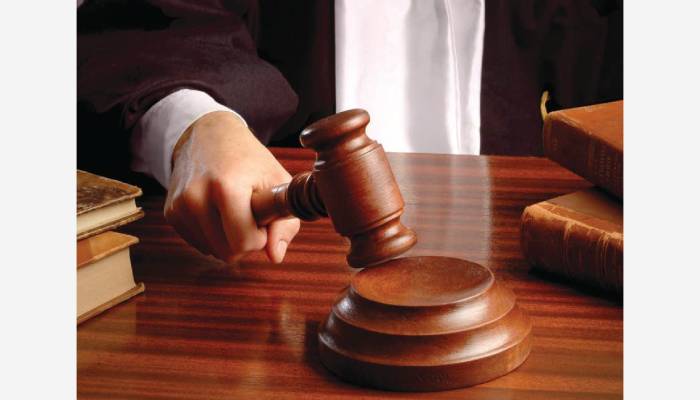
The Contempt of Court Act 1971 is an important legislation affecting the freedom of expression, administration of justice and the reputation of the court. These are also issues which touch at the root of democracy. The power to punish for contempt is vested with the judiciary granted by the constitution of India. But the same constitution guarantees the freedom of expression. Articles 129 and 215 of the Constitution make the Supreme Court and the High Courts respectively ‘Courts of Records with power to punish for contempt’. Apart from this, the Constitution permits reasonable restrictions on the guaranteed right of freedom of speech and expression in the interests of, inter alia, contempt of court.
There was no codified law of contempt till the Contempt of Courts Act was passed in 1926. It was replaced by the Contempt of Courts Act 1952. Then came the Contempt of Courts Act, 1971 in order to harmonize the interests of the individual’s freedom of expression and the interests of the administration of justice within the framework of the Constitution. Neither the Act of 1926 nor of 1952 provided any definition of contempt of court, and the Act of 1971, for the first time, gave a complete definition of the expression, by codifying the results of judicial decisions, in cls(a) to (c) of section 2.
The uncertainty in the Law of Contempt of Court is that even when a definition has been introduced by the Contempt of Courts Act, 1971 what constitutes scandalizing the court, or what prejudices, or interferes with, the course of justice have not been defined.
In its latest avatar, the Contempt of Courts (Amendment) Act, 2006 made an important addition to the Contempt of Courts Act, 1971, to provide for truth as a valid defence in contempt proceedings.
Many legal experts feel that the contempt of court law should, in fact, be amended. “Contempt is nothing but censorship and there is no place for censorship in the Constitution,” Upendra Baxi, professor of law at the University of Warwik, had said in a media report. Baxi had questioned Supreme Court judges in 1979 in an open letter after the court acquitted two policemen of custodial rape in the famous Mathura case. The questions — and the outrage that the acquittal triggered — led to amendments in the rape law.
Fali Nariman is quoted as saying : “There is urgent need to proclaim — and only the highest court can so proclaim — that contempt jurisdiction for scandalising the court, like the death penalty jurisdiction, ought to be invoked only in the rarest of rare cases, and not left to be exercised by benches of two three judges. And it must only be exercised under rules framed by the court — by a bench of at least five justices: this will help everyone accept that the Supreme Court of India (like its counterpart, the US Supreme Court) has come of age, that it can take sharp blows on its chin, that our judges are human and apt to err like the rest of us, and that to point out their errors (even occasionally in colourful language) is no sin.”
Recently, a Supreme Court bench of Chief Justice P. Sathasivam, Justice Ranjan Gogoi and Justice Shiva Kirti Singh stated in Sudhir Vasudeva, Chairman & Managing Director, ONGC &Ors. Vs. M. George Ravishekaran & Ors that under the constitution as well as a law, the Supreme Court and the High Courts are conferred with the power to punish for contempt, which is a special and rare power and thus, it should be exercised with greatest of care and caution. The Apex Court set aside, the contempt proceedings initiated by the Madras High Court on January 19, 2012 against ONGC chairman and managing director Sudhir Vasudeva for not obeying with its order for creating excessive posts of a marine assistant radio operator. The apex court stated that contempt of court is an extreme power which, if misused, could even restrict the liberty of the individual charged with commission of contempt.
The LW Bureau is a seasoned mix of legal correspondents, authors and analysts who bring together a very well researched set of articles for your mighty readership. These articles are not necessarily the views of the Bureau itself but prove to be thought provoking and lead to discussions amongst all of us. Have an interesting read through.

Lex Witness Bureau

Lex Witness Bureau

Lex Witness Bureau

For over 10 years, since its inception in 2009 as a monthly, Lex Witness has become India’s most credible platform for the legal luminaries to opine, comment and share their views. more...
Connect Us:


The Grand Masters - A Corporate Counsel Legal Best Practices Summit Series
www.grandmasters.in | 8 Years & Counting
The Real Estate & Construction Legal Summit
www.rcls.in | 8 Years & Counting
The Information Technology Legal Summit
www.itlegalsummit.com | 8 Years & Counting
The Banking & Finance Legal Summit
www.bfls.in | 8 Years & Counting
The Media, Advertising and Entertainment Legal Summit
www.maels.in | 8 Years & Counting
The Pharma Legal & Compliance Summit
www.plcs.co.in | 8 Years & Counting
We at Lex Witness strategically assist firms in reaching out to the relevant audience sets through various knowledge sharing initiatives. Here are some more info decks for you to know us better.
Copyright © 2020 Lex Witness - India's 1st Magazine on Legal & Corporate Affairs Rights of Admission Reserved